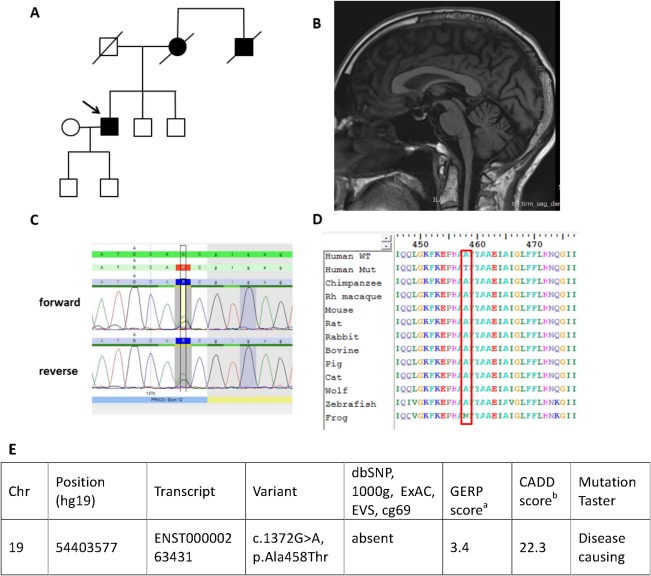Figure 2.

Genetic and clinical details of case VIII‐1 presenting with an unusual phenotype of severe dystonia and peripheral neuropathy. (A) Family tree. (B) Sagittal MRI of patient at age 65 showing mild cerebellar atrophy and thin cervical cord. (C) Sanger sequencing result of the novel mutation c.1372G>A. (D) Conservation through species of the novel mutation c.1372G>A. (E) Frequency and in silico predictions of the heterozygous, novel missense protein kinase Cγ gene (PRKCG) mutation identified. aGERP, positive conservation scores represent a substitution deficit and indicate that a site may be under evolutionary constraint. Negative scores indicate that a site is probably evolving neutrally. Positive scores scale with the level of constraint, such that the greater the score, the greater the level of evolutionary constraint inferred to be acting on that site. bCADD, Combined Annotation Dependent Depletion is a tool for scoring the deleteriousness of single nucleotide variants as well as insertion/deletions variants in the human genome across a wide range of functional categories, effect sizes, and genetic architectures. GERP, Genomic Evolutionary Rate Profiling; D, deleterious/damaging/disease‐causing. [Color figure can be viewed at http://wileyonlinelibrary.com]
